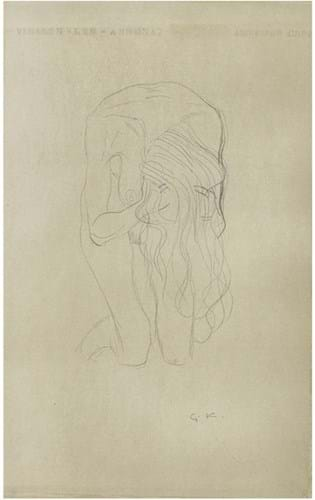
The black chalk sketch is one of a number of studies the artist made for the Beethoven Frieze, a monumental work intended as a celebration of the composer that Klimt painted directly on the walls in the Secession Building in Vienna.
The finished work, which measured 112 ft (34m) in total, was shown to great acclaim at the 14th Vienna Secessionist exhibition in 1902 and proved to be a turning point in Klimt's fortunes.
The drawing on buff paper at Chiswick depicts a female nude in the throes of despair and measures 19 x 121/2in (49 x 32cm). It is signed with the artist’s initials and also has the initial R in the lower right corner. The catalogue states that this indicates it was owned by Carl Reininghaus (1857-1929), the industrialist who was a key patron of the artist and acquired Klimt's finished Beethoven Frieze together with related sketches for the project to save it from destruction following its exhibition.
Klimt scholar Alice Strobl believed this drawing was a study for Nagender Kummer (Gnawing grief) in the frieze, but fellow expert Dr Marian Bisanz-Prakken who helped the auction house with the catalogue entry identified it as, in fact, belonging to the planned first group of figures in the frieze called Die Leiden der schwachen Menschheit (The suffering of weak humanity) which Klimt, after developing his ideas, eventually chose to omit from the finished composition.
The sketch last appeared at auction at Sotheby Parke Bernett in New York in May 1979 where it was purchased at the above sale by the parent's of the present owner.





